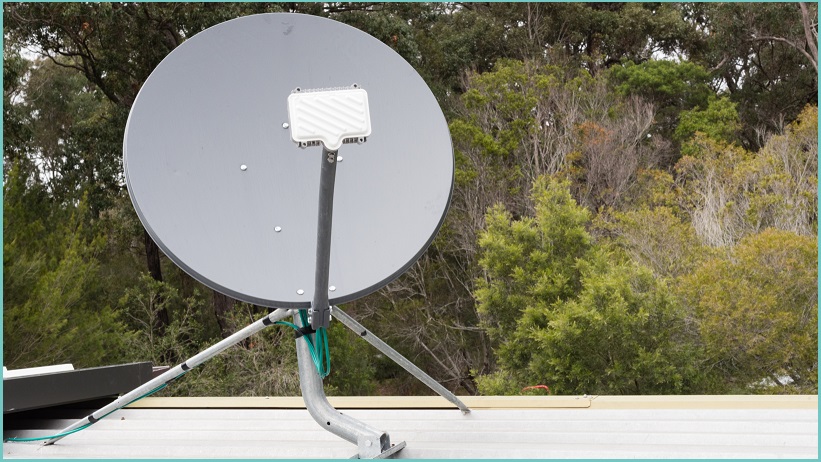Slow rollout progress and politicisation of funding are hampering the effectiveness of NSW’s $400m mobile blackspots program, a phalanx of regional and rural members has argued during a Parliamentary debate in which it was revealed the government has funded just 15 new towers in three electorates representing over half of the state’s land mass.
Those towers – spread across Barwon, Murray, and Orange electorates comprising the western half of NSW – had barely moved the needle for 160,000 residents who, MPs said, still can’t get adequate connectivity to support remote working, transformative digital technologies, e-commerce, or even basic 000 emergency services.
“Blackspot-free communication is needed to unlock the economic potential of regional NSW,” Member for Orange Philip Donato said during the debate, noting that population “decentralisation is also stifled in the absence of reliable, blackspot-free communications.”
For a population that relies on communication to span vast distances – in a world where remote working can help residents live and work outside of city areas – “reliable communications – or lack thereof – can be a decision-maker or decision breaker.”
NSW’s state Connecting Country Communities Fund (CCCF) complements the federal government’s Mobile Black Spot Program (MBSP) – which the NSW Government claims is bringing better connectivity to around 54,000 NSW residents – and was established with funding including $39m for 140 regional mobile base stations and $11.5m to improve regional Internet connectivity.
Funding was expanded in 2019 with the Regional Digital Connectivity (RDC) program, which has promised “metropolitan levels of service to regional NSW” – but two years on, rural members were sceptical about its benefits.
“Despite the big dollars announced by the Government to fix this problem, the Barwon electorate is yet to see any real benefits,” member for Barwon Roy Butler said, noting the more than 100 “startling submissions from people and groups” sharing stories such as a “young lady from Narromine who could not access remote learning at home. She can only get reception in one place in the house.”
State vs Federal vs commercial
Despite extensive political rhetoric about the importance of connectivity, persistently poor coverage has exacerbated the regional digital divide as the COVID-19 pandemic pushed regional residents to lean more heavily on digital government and commercial services.
The ever-shifting balance between state, federal, and commercial priorities had diluted responsibility for infrastructure upgrades, with Butler noting correspondence from the rural Louth Chamber of Commerce.
After waiting for years, Louth finally got some second-hand 3G mobile equipment installed, he reported – but after asking whether this could be upgraded to 4G Telstra responded that the speed of the 5G mobile rollout meant it no longer made sense to maintain the “legacy 3G service offering”.
“So, what happens to Louth?” Butler said. “Will the NSW Government leave it to the telcos to sort out a solution based on what is best for their bottom line?”
Ongoing debate over state-level investments in rural infrastructure has highlighted the immensity of the task of closing gaps in even basic mobile coverage, much less the massive chasm between basic coverage and the type of high-speed, ubiquitous data available in capital cities.
Member for Dubbo Dugald Saunders crowed about a new Rural Access Gap Program pilot “which will result in complete upgrades to SMART boards in every regional school’s classroom and Internet speeds that are five times faster”, but Swansea member Yasmin Catley wanted to see this and other backbone infrastructure used more broadly.
Although the NSW Government “maintains a range of infrastructure [including the Government Radio Network, NSW Telco Authority and fibre in the ground] that could support the roll out of greatly superior digital communications in rural and regional NSW,” she was sceptical that the infrastructure would be tapped.
“We definitely know that the Government will argue that it is not its job to fix connectivity,” she said, “but that is all BS. The Government has the necessary infrastructure at its fingertips.”
Private-sector saviours
Government intransigence may be softened by recent private-sector initiatives, such as the recent announcement that Australians will soon be able to access the Elon Musk-backed StarLink satellite broadband service – already providing coverage to western NSW for over 70 per cent of the day, according to one set of estimates that expect it to increase rapidly.
Another major infrastructure initiative announced this month, the Bevan Slattery-backed HyperOne initiative, a 20,000km $1.5b national network that Slattery said would be capable of moving data at 10,000 terabits per second across the country.
Such initiatives promise new options for regional residents tired of poor connectivity – but reliance on private-sector wins, Lismore member Janelle Saffin said, highlighted fundamental shortcomings in the government’s approach to filling out regional connectivity.
“The core business of government is to ensure that we have essential services and this is an essential service,” noted Lismore member Janelle Saffin, who called for “fair, equitable and transparent” rollout plans.
“We should not have to even have this debate because our communities should be connected.”
Yet despite frequent complaints from regional residents, Saffin said, government rollout plans were often opaque, with members “told” about tower rollouts in regional areas but few details or consultation provided.
“How many times can the Deputy Premier announce this?” she asked. “We have heard announcement after announcement, but we want to see runs on the board.”










